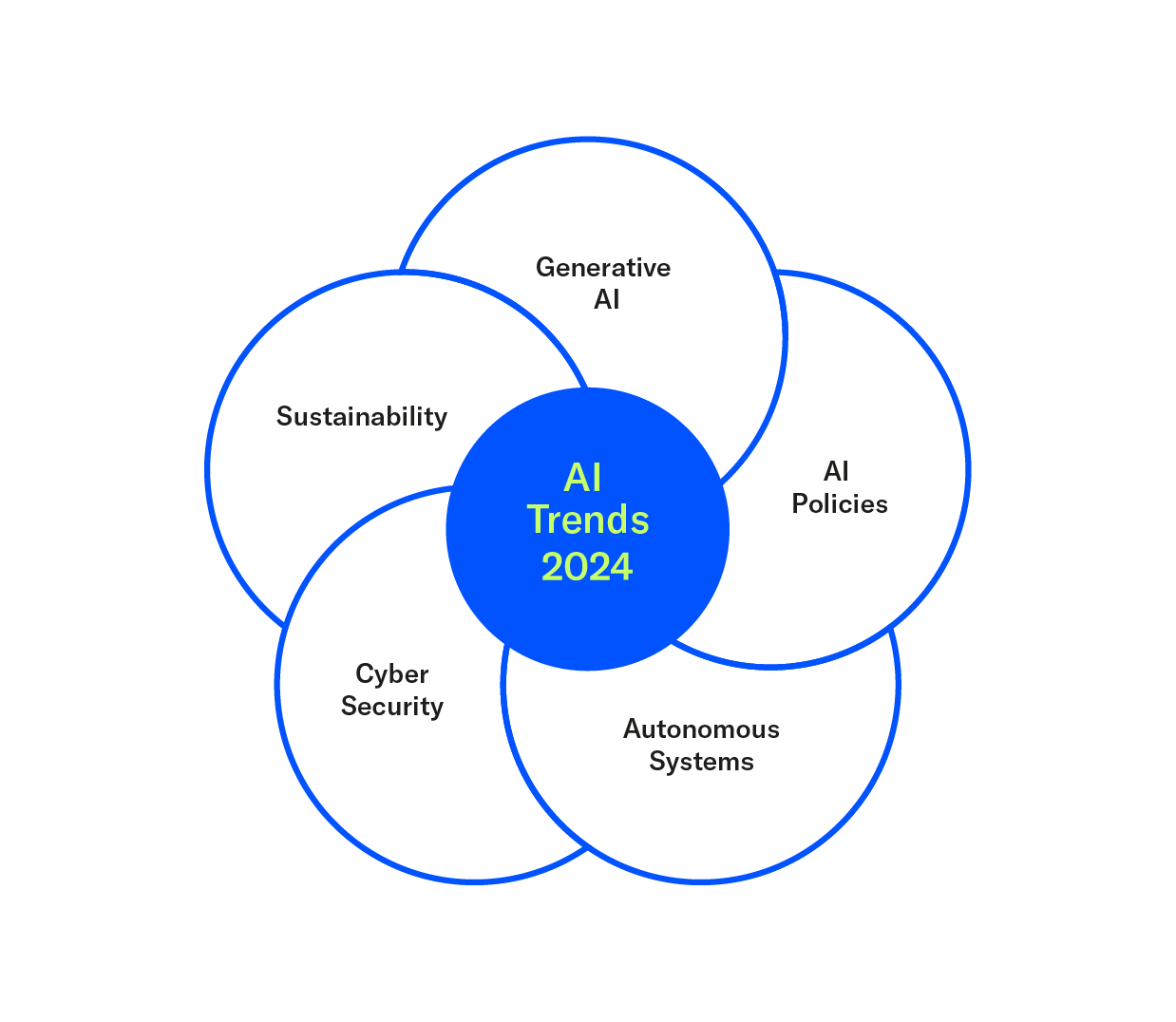The artificial intelligence (AI) world is evolving rapidly, and 2024 is already shaping up to be a year of new innovations and trends. As AI technologies infiltrate more and more areas of our lives and economies, some key trends are emerging that have the potential to permanently change the landscape of AI. In this article, we look at the most promising AI trends for 2024 and discuss their implications for industry, research, and society.
1. Generative AI Reaches New Heights
Generative AI models capable of generating content such as text, images, and music have made impressive progress in recent years. In 2024, these technologies will become even more powerful and versatile. We expect Generative AI to be increasingly integrated into creative professions, enabling artists, designers, and content creators to explore new forms of creativity with the help of AI. Generative AI is only at the beginning of its potential and is expected to find innovative applications in many other fields. It is important to keep ethical considerations and the quality of the generated content in mind. To this end, several techniques are being developed to automatically fact-check the output of generative AI. For example, knowledge graphs can be used for this purpose, which, due to their data structure, can be very complementary to systems such as large language models (LLMs).
2. AI guidelines come into focus
With the increasing use of AI systems in critical areas such as healthcare, finance, and law, the importance of ethical considerations is becoming more apparent. In 2024, the development and implementation of ethical guidelines and standards for AI is likely to become a key issue. This will include issues of transparency, fairness, data protection, and the avoidance of bias to ensure that AI technologies are used for the benefit of all. In Europe, the recently ratified EU AI Act plays an important role, which companies will need to take into account when developing and deploying AI systems in the coming years. This regulatory framework sets binding requirements for the development, use and distribution of AI systems in the EU, with the aim of minimizing risks and ensuring the protection of fundamental rights. Companies developing or using AI technologies will need to adapt to these regulations to ensure compliance and build user trust.
3. Autonomous systems will become ubiquitous
Advances in autonomous systems, including robots and self-driving vehicles, will continue to accelerate in 2024. At the heart of autonomous robotics are advanced AI algorithms that enable robots to understand their environment, make real-time decisions, and perform tasks autonomously. Improvements in sensor technology, such as lidar, radar, and advanced image processing techniques, are enabling more precise sensing and interpretation of the environment. At the same time, developments in robotic actuators and modular robot designs allow greater flexibility and adaptability to different tasks and work environments. From logistics and manufacturing to personal transportation, we expect to see a significant increase in the potential applications of autonomous systems, leading to efficiency gains and new business models. The deployment of autonomous robotic systems also faces other technical and regulatory challenges. These include ensuring interoperability between different systems, ensuring cybersecurity in networked environments, and developing standards for human-robot collaboration.
4. AI-powered cybersecurity
The combination of AI and cybersecurity is a key trend that is becoming increasingly important as organizations around the world face increasingly complex and sophisticated cyber threats. The Cyber Resilience Act (CRA), agreed by the European Commission at the end of 2023, is also raising expectations for businesses to invest in their cybersecurity. AI-based security solutions are becoming increasingly important for detecting and defending against cyber attacks. AI can help identify patterns in large amounts of data to spot anomalies and take preventative action before damage occurs. While AI offers tremendous benefits, it is also important to ensure the security and integrity of the AI systems themselves to protect them from tampering or misuse. In particular, generative AI can be used by cyber attackers themselves. In any case, the combination of AI and cybersecurity will become increasingly important in the future.
5. AI and sustainability
Another trend for 2024 is the use of AI to promote sustainability and combat climate change. By analyzing large amounts of data, AI can help increase energy efficiency, make better use of renewable energy, and promote sustainable agricultural practices. AI-based systems will play a key role in monitoring and reducing human impact on the environment. However, an important aspect to consider in this context is the energy consumption of AI systems themselves, especially large language models (LLMs). Work is underway on several fronts to improve the sustainability of AI systems. This includes developing more efficient algorithms that require less computing power for training and deployment. At the same time, many data centers are increasingly relying on renewable energy sources to reduce the carbon footprint of running AI systems.
Conclusion
2024 will be an exciting year for the development and application of artificial intelligence. The trends mentioned above show the immense potential of AI, but also pose new challenges in terms of ethics, security and sustainability.
An advisory partner like Cloudflight can help to identify and implement the best use cases for AI in the enterprise. Whether it is a solution in the area of process automation, quality control or a completely individual use case: Cloudflight provides expert support for the complete implementation, integration and maintenance of AI solutions.

